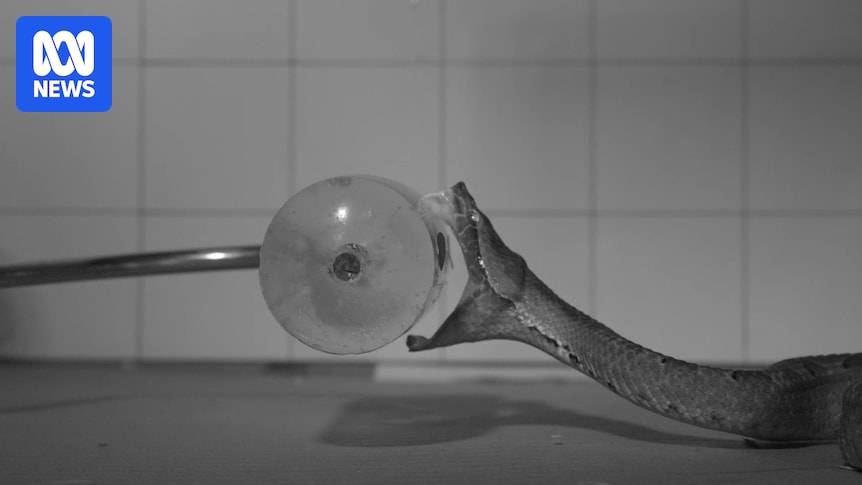
Venomous snakes are renowned for their lightning-fast strikes, capable of reaching their prey or even humans in mere milliseconds. Recent advancements in high-speed camera technology have allowed scientists to slow down these rapid movements, uncovering the varied techniques snakes use to deliver their deadly venom. A groundbreaking study conducted by a team of Australian researchers, published in the Journal of Experimental Biology, offers new insights into these lethal strikes.
This study, the largest of its kind, meticulously compared the strike mechanisms of venomous snakes under controlled conditions. Led by Silke Cleuren, an evolutionary biologist from Monash University, the research team traveled to Venomworld in Paris. This facility, known for breeding snakes for venom extraction used in medical research, provided a diverse array of scaly subjects for the study.
Unveiling the Secrets of Vipers
Vipers, infamous for their rapid strikes, were a focal point of the study. The team discovered that, on average, these snakes reached their prey within just 100 milliseconds—three times faster than the blink of a human eye. The Levantine viper (Macrovipera lebetina) was particularly impressive, striking in just over 20 milliseconds.
According to Alistair Evans, a co-author of the study and evolutionary morphologist at Monash University, the vipers’ speed surpasses the “mammalian startle response,” which is the time it takes for a mammal to perceive and react to a threat.
“Less than 100 milliseconds is much, much faster than the mammalian startle response, particularly for large mammals like us,” Professor Evans explained.
Vipers possess hinged fangs that allow them to extend their long teeth when striking. If the initial bite is not optimal, they can adjust their fangs to better inject venom. Vipers dominated the study, representing 31 of the 36 snake species analyzed.
Timothy Jackson, a snake venom researcher at the University of Melbourne, praised the study’s significance. “We don’t see a great deal of this kind of work,” he noted. “They convincingly make the case as to why their own study significantly improves our knowledge.”
Elapids: Fast and Furious
Most of Australia’s venomous snakes belong to the elapid family, characterized by fangs located at the front of their mouths. The Australian rough-scaled death adder (Acanthophis rugosus) was among the elapids studied, demonstrating remarkable speed by reaching its prey in about 30 milliseconds.
Dr. Jackson highlighted the similarities between elapids and vipers, stating, “Death adders strike extraordinarily quickly and are very much in the viper range … these are incredibly fast strikers.”
“In terms of reaching maximum velocity, death adders were the second fastest species in the entire study,” he added.
Elapids, with their shorter fangs, tend to approach their prey more closely before striking repeatedly to inject venom. While the findings largely confirmed existing knowledge, Dr. Jackson emphasized the value of quantitative analysis in validating scientific intuitions.
Colubrids: A Unique Approach
The study also included the mangrove or gold-ringed cat snake (Boiga dendrophila), the sole representative of the Colubridae family. Unlike vipers and elapids, colubrids have fangs situated towards the back of their mouths, resulting in a distinct biting style.
The gold-ringed cat snake’s maximum gape was achieved sooner and maintained longer than other species, allowing for effective venom transfer. Its final velocity increased over successive bites, reaching up to 3.2 meters per second.
“One of the interesting findings of the paper was how different families of snakes use their venom in different ways,” Professor Evans remarked.
Despite the limited representation of colubrids in the study, the findings provide a foundation for future research. Dr. Jackson suggested that this study could serve as a blueprint for similar research worldwide, advocating for broader application and potential modification for other studies.
As the study highlights the diverse strategies employed by venomous snakes, it underscores the importance of understanding these creatures’ behaviors. Such insights not only enhance our scientific knowledge but also contribute to medical applications, particularly in the development of antivenoms. The research opens the door for further exploration of snake venom mechanics, offering a glimpse into the complex world of these fascinating reptiles.




